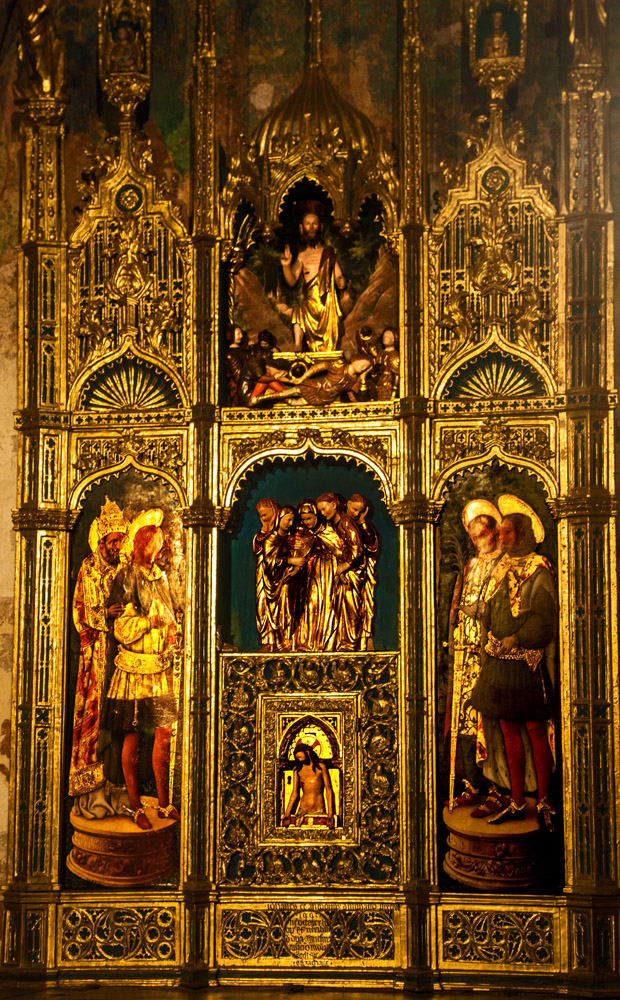
Antonio Vivarini and Giovanni d'Alemagna
Polyptych of the Body of Christ
1443
Chapel of San Tarasio
Church of San Zaccaria, Venice, Italy
The central panels present a creative arrangement of traditional images. In the lowest panel is a Man of Sorrows image, the wounded body of Christ standing in a sarcophagus. In other images the Virgin Mary and John the Evangelist stand on either side of the body, but for this work the artist has placed them above and accompanied by four disciples, all in attitudes of grief. The arrangement is borrowed from Crucifixion images and thus marks a step in the progression from Jesus' torments to his death to his resurrection in the uppermost panel.
In the upper panel the artists combine two traditional ways of picturing the Resurrection. In one, Christ rises from a sarcophagus while the soldiers react in awe and stupor. In another, less common type, the two Marys of Matthew 28:1-7 see an angel remove the stone from a cave-like tomb and announce that Jesus has risen. Vivarini and d'Alemagna's combined image places the two Marys on the left of the sarcophagus.
Each of the side panels portrays two martyrs who died like Christ and may be said to have risen with him: Caius and Pancras on the left, and on the right Nereus and Achilleus, who share with Pancras their May 12 feast day.
View this image in full resolution.
View these detail photographs:
Read more about images of the Man of Sorrows.
Read more about images of the Crucifixion.
Read more about images of the Resurrection.
Read more about images of St. Pancras.
Also see our discussion of Lorenzo Monaco's Martyrdom of Pope Caius.
Saints Nereus and Achilleus are also pictured and discussed in this polyptych.
Photographed in the chapel by Richard Stracke, shared under Attribution-NonCommercial-ShareAlike license.